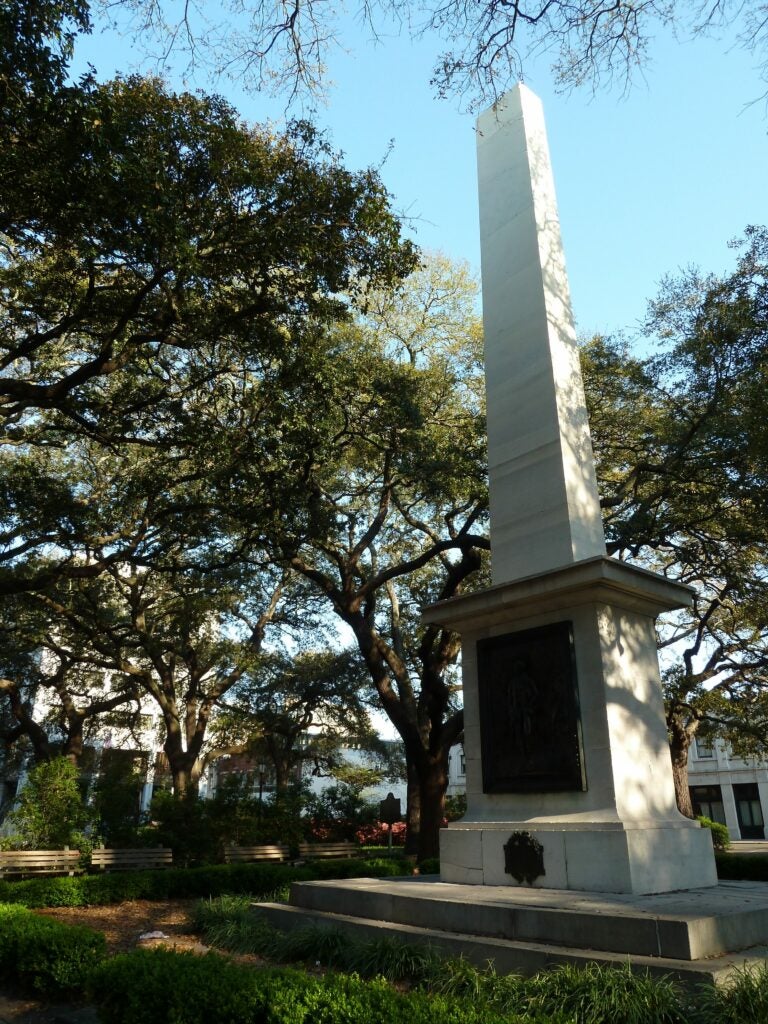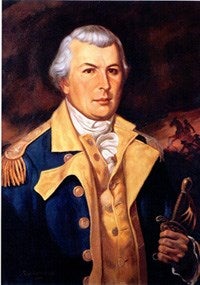Georgia has monuments, a county as well as a street in Augusta named after Revolutionary War hero Nathaniel Greene, even though the general never set foot in Georgia until the very last years of his short life.
Most historians credit Greene with not only driving the British out of Georgia, but also for being Gen. George Washington’s right hand man whose battle tactics and meticulous attention to detail helped turn the tide of the war.
According to the New Georgia Encyclopedia, despite being born in Rhode Island to a Quaker family, Greene let go of his pacifist upbringing and immediately took up arms in 1774, forming the “Kentish Guards” militia. However, he was not allowed to gain a commission in the unit he helped create because he suffered from a severe limp.
MORE: Groups call for ‘no’ vote on mayoral referendum
Even though he was forced to take the rank of private, Greene’s skills saw him leap-frog over his peers and he was promoted to brigadier general in the span of a little over a year, making him the youngest member of the Continental Army to achieve that rank.
Greene caught the eye and ear of Washington early in the war for being good at assessing both battlefield conditions, as well as the logistics needed to support an army, according to the Colonial Williamsburg Foundation.
Generally speaking, Washington learned that he erred when he didn’t take Greene’s advice, which served to make him even more valuable.
Shortly after being promoted to major general, Greene suffered his greatest defeat in naively trying to keep Fort Washington in Patriot hands. This was perhaps the one time that Gen. Washington should have overruled him.
The battle was one-sided, with Greene losing some 3,000 men and being forced to abandon the fort and all of its artillery.
Greene would redeem himself by taking on the role of quartermaster general; he took lessons from the starvation suffered at Valley Forge in 1777 and devised a new supply system and, according to the Colonial Williamsburg Foundation, the soldiers faced an even more severe winter in 1778, but no one went hungry or unshod.

The war still was not going well for the Patriots, the British firmly held Georgia as well as the Carolinas and Washington was not on anything that could be called a ‘winning streak.’
Washington decided to turn over leadership of the Southern theater of the war to Greene, and it was likely the wisest decision he could have made as Greene was an excellent tactician.
Immediately, Greene recognized that his badly out-numbered, rag-tag force was no match against the British professional soldiers, so he devised a plan that, according to Americana Corner, virtually created modern guerilla warfare.
At that time, armies would march in formation, take up their positions, and fire column by column.
Greene knew that his army had no chance against British General Cornwallis’ troops, writing to Gen. Washington, “I see little prospect of getting a force to contend with the enemy upon equal grounds and therefore must make the most of a kind of partisan war.”
The first masterstroke was that Greene separated his forces into two halves, knowing that Cornwallis would have to do the same. This put the British in a vulnerable position and Greene took every advantage of delivering death by a thousand paper cuts.
Greene’s biggest advantage was that he and his men knew the lay of the land, unlike the British who were fighting in foreign territory. Patriots were literally appearing out of the shadows and out of the trees, picking off a few Red Coats each time.
The attacks got so bad, the British soldiers were afraid to fall asleep, lest they not wake up.
While Greene did not participate personally in the battle of Augusta, he did send an army under Colonel Henry “Light-Horse Harry” Lee to aid Elijah Clark and Andrew Pickens. According to the New Georgia Encyclopedia, with the troop supplement, the battle of Augusta was over in two weeks and the British fled.
Life after the war was difficult for Greene, like many of his contemporaries, he lost his life savings and most of his possessions in the war. However, he went in as the youngest general and came out the longest serving general of the American Revolution.
As an act of gratitude and knowing that Greene was broke, the state of Georgia gave Greene the 2,000 acre Mulberry Plantation near Savannah, land that was seized from a Loyalist that fled to England. It would be at this same plantation many years later where Eli Whitney invented the cotton gin.
However, Greene found no success in being a rice farmer. With his health failing, he died of what was determined to be sunstroke in 1786 at the age of 44.
…And that is something you may not have known.
Scott Hudson is the Senior Investigative Reporter and Editorial Page Editor for The Augusta Press. Reach him at scott@theaugustapress.com











